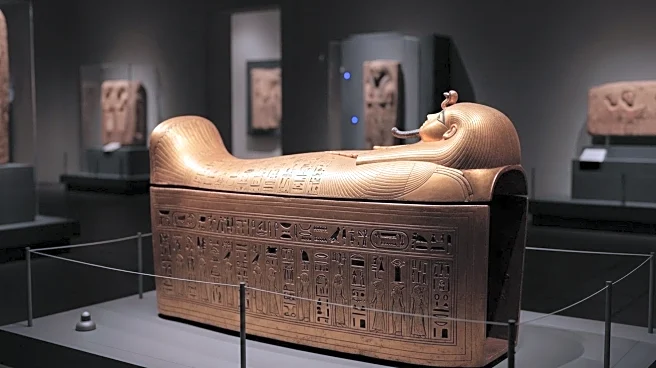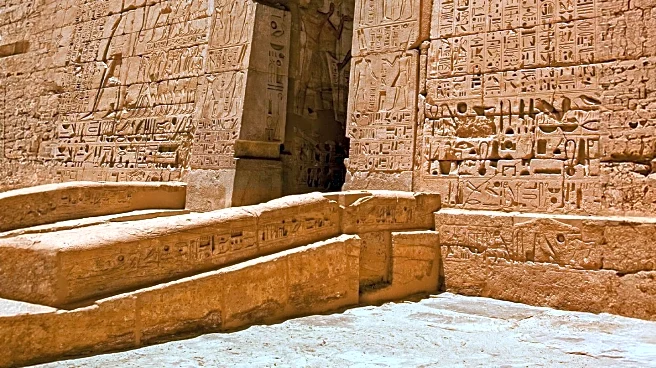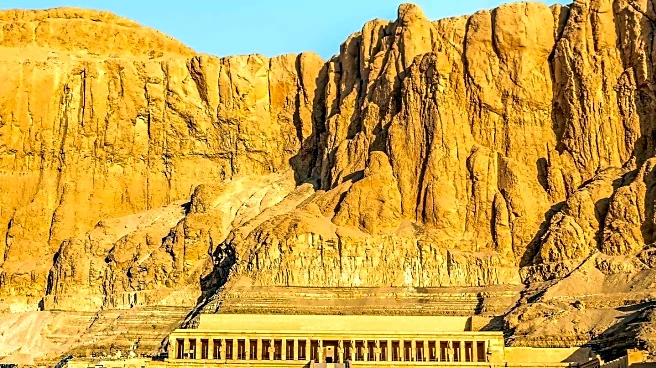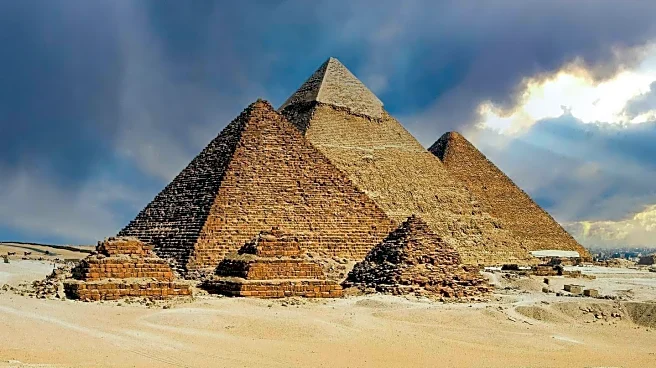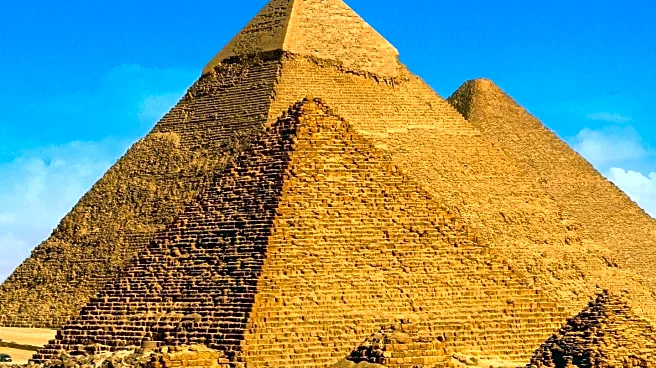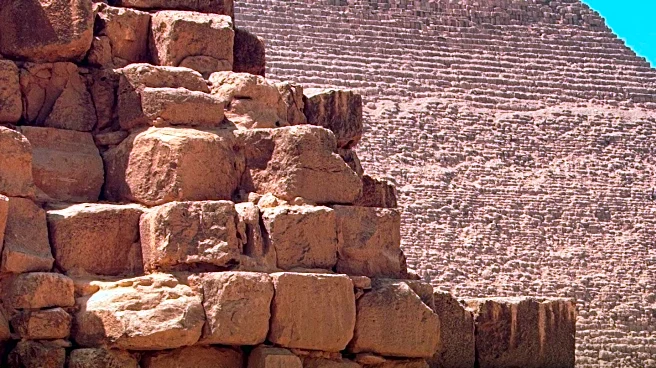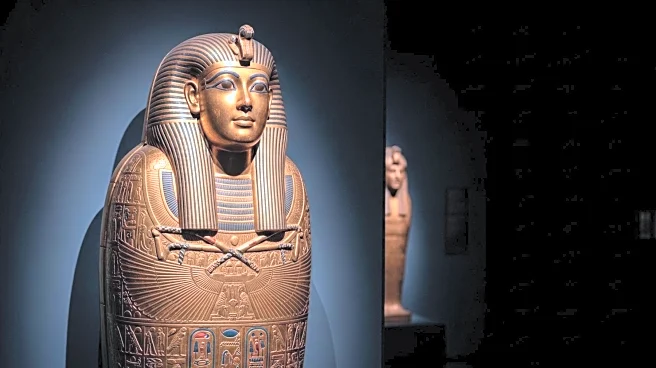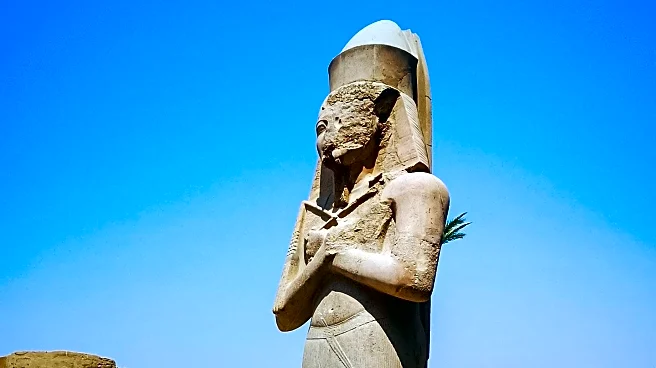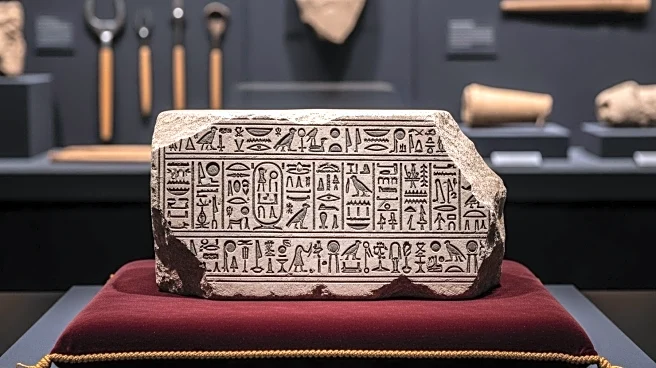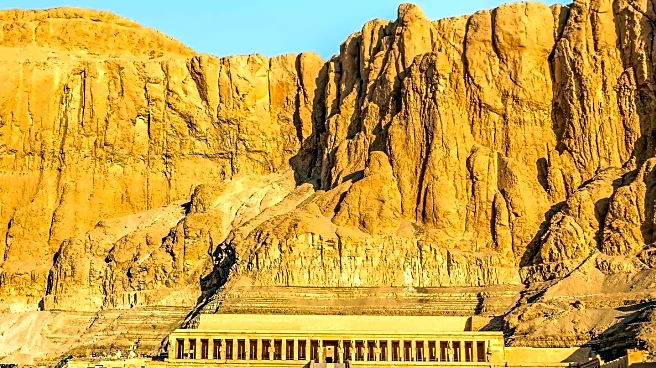What is the story about?
What's Happening?
An artwork depicting the seasons of the ancient Egyptian calendar has gone missing from the Saqqara necropolis. The theft was discovered by a British mission working in the tomb of Khentika, a priest and overseer of the royal palace. The painted limestone relief, measuring two feet wide, was reportedly cut away with an electric saw. The artwork holds significant symbolic meaning related to the cycle of life, agriculture, and fertility in ancient Egyptian belief. The theft follows a recent incident involving the theft of a 3,000-year-old gold bracelet from the Egyptian Museum in Cairo.
Why It's Important?
The theft of culturally significant artifacts from Egypt's historical sites raises concerns about the security and preservation of ancient heritage. Such incidents can undermine efforts to protect and promote Egypt's rich archaeological legacy, which is crucial for tourism and cultural education. The loss of artifacts with profound symbolic meaning can impact scholarly research and understanding of ancient Egyptian civilization. The theft also highlights the challenges faced by authorities in safeguarding historical sites against illegal activities.
What's Next?
Egyptian authorities are likely to enhance security measures at archaeological sites and museums to prevent further thefts. This may involve increased surveillance, stricter access controls, and collaboration with international organizations to track stolen artifacts. The incident could prompt discussions on the importance of international cooperation in combating art crime and recovering stolen cultural property. Efforts to raise public awareness about the value of cultural heritage and the consequences of artifact theft may also be intensified.
Beyond the Headlines
The theft of the artwork from Saqqara may lead to broader discussions on the ethical responsibilities of archaeologists and researchers working in foreign countries. It could also spark debates on the role of international art markets in facilitating the sale of stolen artifacts. The incident may encourage the development of new technologies and strategies for tracking and recovering stolen cultural property, as well as fostering global cooperation in heritage preservation.
AI Generated Content
Do you find this article useful?
